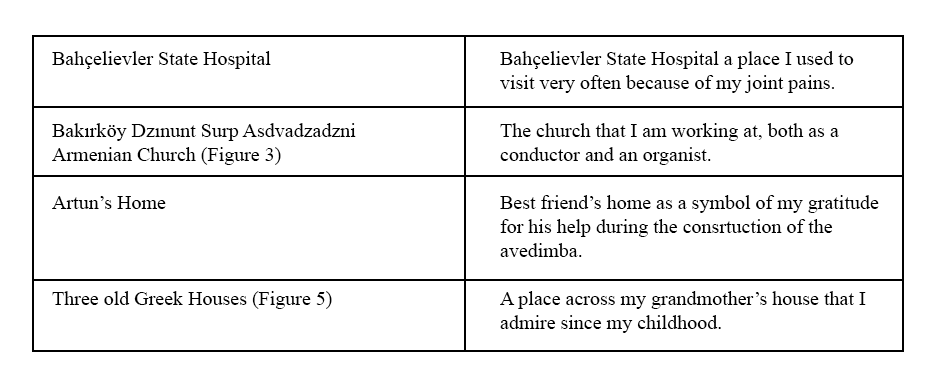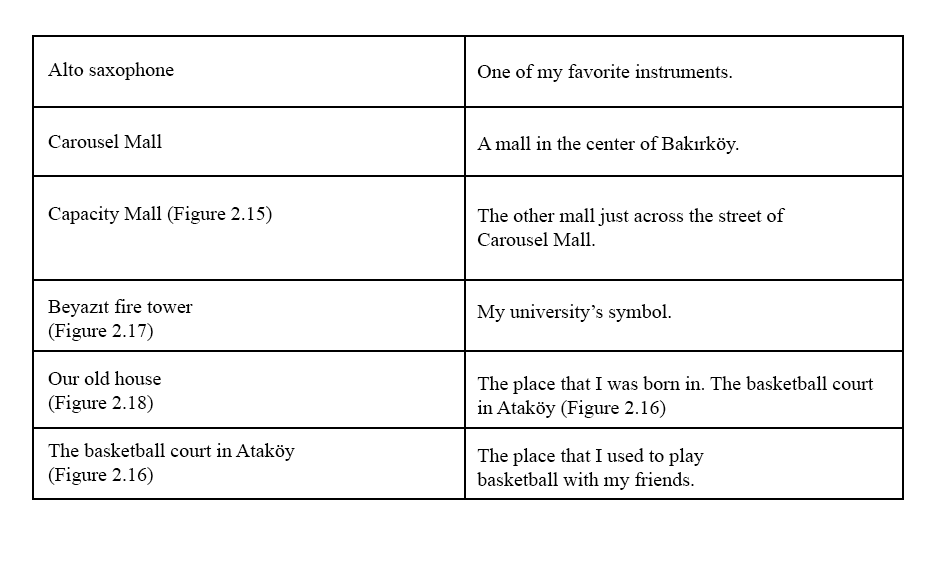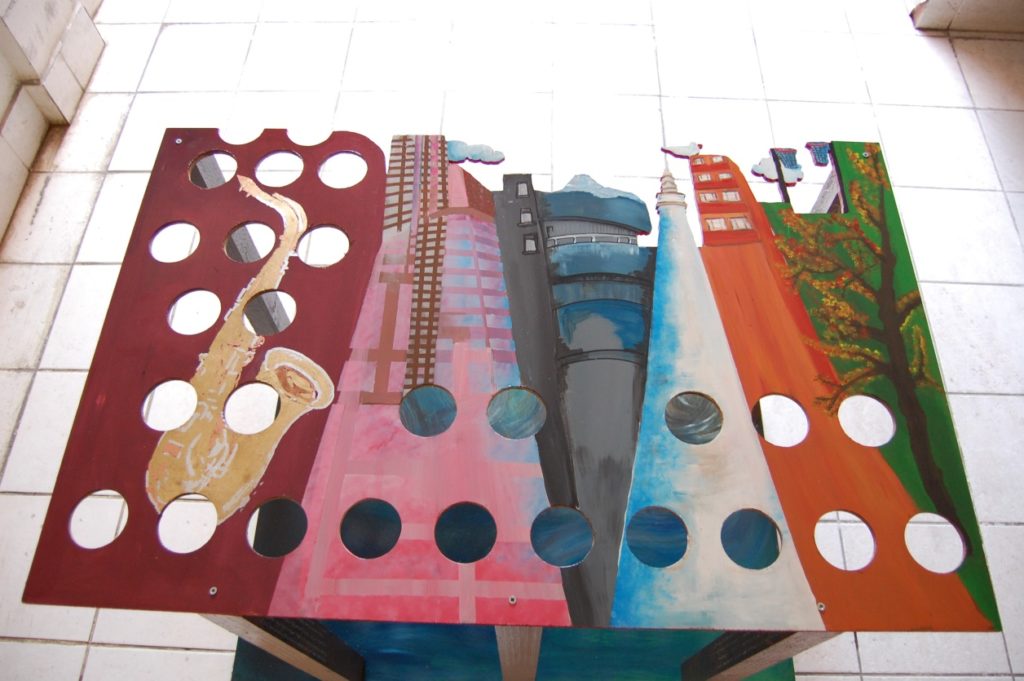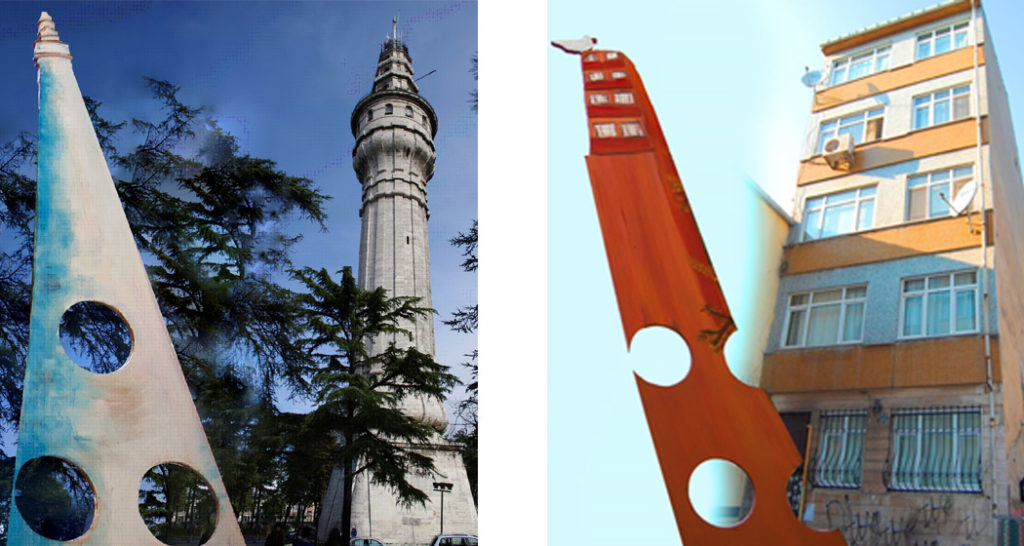Avedimba is the second instrument designed especially for the album ‘Kharn’. With time it became a huge project itself and it took almost 3 years to finish. It has a crucial role in the piece ‘Beyazıt’ because it shares the same motivic intentions with the album itself. ‘Kharn’ is a subjective lyrical landscape of Istanbul. All of the compositions describe the towns that I have been through, so does the avedimba’s body art.
Basically the main idea was to build a PVC marimba. Due to the large scale that I was in search of for this instrument, I thought it would be a better idea to build a hot-plug instrument, with two different panels in terms of practicality. The smaller one is called tenor avedimba, and larger one is the bass avedimba (even though they do not correspond to the exact tessitura). The instrument involves two and a half octave, starting from G1 to C4. The tenor avedimba is a one octave instrument (C3 to C4) with shorter pipes and slightly higher notes compared to the other one. On the other hand the bass avedimba involves one and half octave from (G1 to B2) with bigger pipes up to 3,5m.
Design
In this section, I will try to convey all the design aspects of the avedimba. The main upper board of the avedimba, represents the ground and the city which is built upon it. The pipes represent the sewer pipes of the city, and the bottom board represents the sea that sewers drain. On the other hand the wooden stands have a design related to the content in the upper board. If the upper board contains a tree, the wooden stands are painted as roots (Figure 2.12), whereas if the upper board contains a building, the wooden stands are painted as reinforcing bars.

Furthermore I will examine the parts individually, starting from the upper board. The upper board contains drawings of several buildings and places. These places are not the best places that I have ever been, but instead the places where I have spent most of my time, and have experienced some meaningful moments too. On the following tables (Table 2.1 and Table 2.2) you will see the list of the paintings and the significances of them.
Table 2.1: List of paintings on the upper board of the tenor avedimba (from left to right).

After deciding these places, I talked to Makruhi Keçiyolu, who was my painting teacher during my elementary years. She gladly accepted to draw and paint the first drawings on both the upper and bottom panels of the avedimbas.
After cutting them, the boards were ready to paint. For all the parts except the alto saxophone and Carousel Mall, I worked with Makruhi Keçiyolu and Volkan Yarıcı. For the alto saxophone and Carousel Mall, Hampartsum Demircioğlu accepted me in his studio instead, and drew them with his special techniques. The alto sax part was made by the use of three different precious metal foils. The thin foils of gold, silver and bronz were glued by him carefully throughout the process. After all boards were painted, I painted the wooden stands myself. The wooden stands contain something related to the top panel. So I had three different designs for the wooden stands. Except two of them, all were painted as reinforcing bars. One of them has painted as the roots of the tree which belongs to the painting of the basketball yard in Ataköy. The saxophone part of the top panel also has a stand below, it has painted with the 4 part notation of an Armenian chant (each side of the wooden stand contains one part of it) composed by Gomidas (Figure 2.12).
When it was all done, I varnished all the parts to protect the paintings and to increase the durability of the avedimba (Figure 2.10 and 2.11).

Figure 2.10: Top board of tenor avedimba after painting.

Figure 2.10: Top board of tenor avedimba after painting.

Figure 2.16: The basketball court in Ataköy.

Figure 2.11: Top board of bass avedimba after painting.

Figure 2.10: Top board of tenor avedimba after painting.

Figure 2.17: Beyazıt fire tower Figure 2.18: Our old house
Tuning
Tuning was the hardest stage of the building process of the avedimba. I didn’t have any guide about the length of the pipes. Of course it was possible to calculate the lengths, but I didn’t know how much impact the corners would have. And without this knowledge, it was also really hard to shape the pipes in terms of tightening them. Without knowing the length and the numbers of the corners, I started to improvise the shapes of the pipes. The corners were not changing the color of the sound as much as I assumed. For sure this was a cooperative work with the design of the panels.The shape of the pipes such as their length and width were designated by the aspects of the panels and stands. Thankfully, I didn’t have any major problems with the first sketches of the avedimba, otherwise all my efforts in terms of design would have been a waste.
I used a saw to cut the pipes. It was too hard to do minor changes with a manual saw, and the effort needed was also huge. After having a rough tuning of all the pipes, I started to install them into the avedimba. Generally, a single note was generated by the use of many pipes, so the tuning process was made just by the cutting of the last pipe attached to the note. When the rough assembling was done, I didn’t like the image that I was seeing. Even though the pipes were representing the sewer pipes of the city, the pipes were looking extremely ugly with their factory design. So I found it reasonable to paint the pipes as well. After buying spray paints, I tried it on one pipe to understand the impact of the paint on the sound. By realising that there was almost no impact, I disassembled all pipes again and painted them 3 times to get the proper color I wanted.
When all the painting job was finished, I started to assemble them after doing a well tuning. The tuning and assembling of one pitch took almost one or two days. I borrowed a grinding machine from my father’s workplace to get a more critical tuning. The tuning machines were not detecting the tune correctly, especially in higher pitches. I used 3 tuning machines simultaneously, still they were not able to show the right pitch, but generally some harmonics. I solved this situation by just trusting my ears. With the help of a keyboard (tuned in 440 Hz.) I shaped the pipes over and over again. While I was cutting the pipes, if I was reaching a lower Hertz value than needed, that was not a problem since I could still cut some more and reach the proper Hz. value. But of course I had confronted the opposite situation a lot, because it was always a matter of milimeters. In these situations, I generally switched the pipes with an untuned higher pitch pipe.